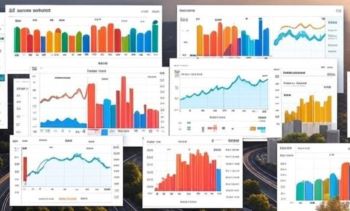While SEO metrics providers are mostly useful for large websites, the results can be significantly low or even high for small and medium websites
Third-party SEO metrics providers like Semrush, Ahrefs and Similarweb have emerged as popular platforms to estimate traffic, backlinks and overall domain authority ratings and score. While these can provide ballpark figures for large sites with high traffic, the results can be inaccurate for small and medium sites. Data estimates for small and medium websites can be either too low or too high in many cases. There are several reasons why this is happening. Let us take a look.

Only around 5,000 keywords covered – Tools like Semrush and Ahrefs have their own keyword databases. While there can be millions of keywords, sites like Semrush and Ahrefs usually only consider around 5,000 keywords for their calculations. This is why the numbers for small and medium websites can be highly inaccurate.
For example, small and medium websites have a lot of traffic coming from long-tail, low-volume keywords. These are rarely considered by tools like Semrush and Ahrefs. As a result, thousands of small but collectively important keywords are ignored. This leads to low traffic estimates.
Direct traffic is ignored completely – Tools like Semrush and Ahrefs rely on search rankings and click models to determine their scores and ratings. They completely miss out on traffic that is generated by typing or clicking a URL directly. These can come from various sources such as loyal users and repeat visitors.
It can also come from clickable links in PDFs, emails and messaging apps. Such direct traffic can contribute significantly to overall traffic generated by small and medium sites. But this direct traffic is not included by tools like Semrush and Ahrefs. It eventually leads to inaccurate traffic results.
Traffic from social media not covered – Tools like Semrush and Ahrefs are unable to cover traffic generated from social media platforms such as X (Twitter), Instagram, Facebook, LinkedIn, WhatsApp, etc. Small and medium sites often generate significant traffic from their social platforms.
And the numbers can be quite big in cases where a post goes viral. Unfortunately, traffic from social media channels is not covered by tools like Semrush and Ahrefs. Due to this, any small or medium site with active social presence will appear much smaller than it actually is.
No access to Google Analytics – Tools like Semrush and Ahrefs do not have access to real site data as available through Google Analytics. They rely on clickstream data from third-party providers. Data is also sourced from specific browser extensions and anonymized apps. This sample size is often not large enough to accurately calculate the numbers for small and medium websites. As a result, the estimates turn out to be unreliable.
Sampling bias – Clickstream datasets that are used by tools like Semrush and Ahrefs only represent a tiny fraction of total internet users. Large websites do not have an issue since they appear more frequently in the sample. Small and medium websites may not even make it to such clickstream datasets. As such, the traffic data shown is mostly extrapolation, not reality.
Geographical limitations – Data collection is more seamless and efficient across regions like the US and Europe. In comparison, data collection may face challenges across regions such as Asia and Africa. As such, traffic generated by small and medium sites in these regions may remain invisible to tools like Semrush and Ahrefs. It ultimately leads to skewed traffic estimates.
Lack of real-time accuracy – For small and medium websites, a small set of pages could generate most of the traffic. These may not be accurately covered by tools like Semrush and Ahrefs, since they work on monthly averages. The results may be delayed or never reflected accurately.
Genuine websites being penalized, while encouraging black hat SEO and scams
Due to inaccurate results presented by tools like Semrush and Ahrefs for small and medium sites, genuine site owners are facing a big problem. Clients often consider tools like Semrush and Ahrefs as highly reliable. Most clients are not aware that results can be highly inaccurate for small and medium websites. Because of this, genuine portals struggle to get the deals and revenue they rightfully deserve.
Tools like Semrush and Ahrefs are not only hurting small and medium sites, but also encouraging black hat SEO and even various scams and cheating cases. It is reported that black hat SEO techniques can be used to boost numbers on Semrush and Ahrefs. Some examples include buying backlinks in bulk, automated link building, redirects from high-authority domains, manipulating organic traffic signals and anchor text spam & link wheels.
A number of cheating cases and fake websites offering Semrush and Ahrefs boost have also been detected. Since clients blindly trust tools like Semrush and Ahrefs, small and medium site owners could be forced to boost their numbers on these platforms.
What is the solution?
If you ask an expert, they will tell you that the only accurate sources of website traffic are Google Analytics (if installed), Google Search Console and raw server logs data. Tools like Semrush and Ahrefs can create a fair ecosystem for small and medium sites if they can source their data directly from Google Analytics. This can be offered as an option to small and medium site owners.
If they want, Semrush and Ahrefs can also offer this option as a premium service. It is better to create an accurate and reliable ecosystem that helps genuine portal owners instead of promoting black hat SEO and scams.
 Newspatrolling.com News cum Content Syndication Portal Online
Newspatrolling.com News cum Content Syndication Portal Online






